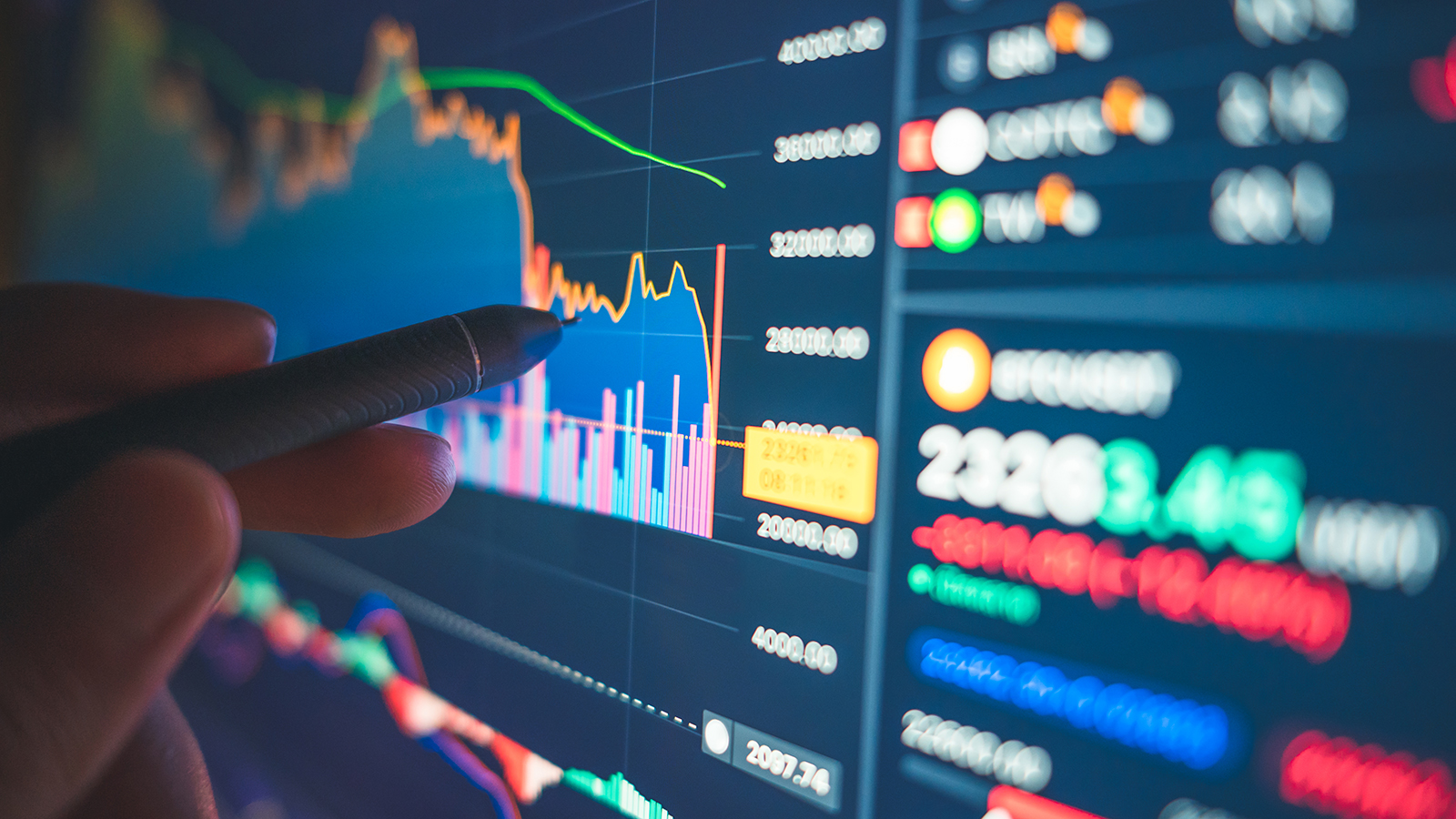Modeling Risk
Friday, January 14, 2022
By Cristian deRitis
As we start a new year, it’s a natural time to reflect on the past as well as our future. The last two years have shown that we still live in a complex and uncertain world, despite all the advances in data collection, modeling and technology.
Cristian deRitis
For risk modelers and analysts, 2022 is sure to bring equal measures of threats and opportunities. While it is hubris to think that we can predict or control the world with any degree of certainty, here are five key trends that will shape our industry and risk management more broadly in the year ahead:
1. Private risk management will increasingly fill the void left by governments.
Issues as diverse as the global pandemic, border conflicts and climate change have divided societies across the globe. By making compromise politically challenging, polarization is hampering governments’ ability to take decisive action on these issues, either through regulation or legislation.
Private institutions, such as corporations and non-governmental organizations (NGOs), are stepping up to fill the vacuum. For example, as investors placed a premium on social and environmental sustainability, interest in companies that performed well according to environmental, social and governance (ESG) criteria exploded in 2021. This trend shows that progress in addressing societal risks is possible, despite government gridlock.
Private risk management will expand and broaden in 2022, partly because of the ramifications of the pandemic. While government vaccine mandates are unlikely to be imposed in many countries due to legal challenges, individuals choosing not to receive a COVID-19 vaccine may see their health insurance premiums rise to reflect the likelihood that they will require hospitalization or costly medical treatment. Indeed, some U.S. companies are already imposing surcharges on their unvaccinated employees, while Singapore announced late last year that it will “begin charging COVID-19 patients who are unvaccinated by choice.”
Similarly, given the risk of rising sea levels and more volatile weather patterns, homeowners in areas subject to flooding or storms will see higher insurance premiums. These higher costs will, in turn, affect individual behavior and lead to calls for coordinated action.
2. Long-term risks will be translated into short-term threats and opportunities.
A key reason why societies are unable to make progress on long-term threats is the concept known to economists as the intergenerational discount rate. Negative events that occur far out in the future matter less to us than more immediate events. For example, knowing that there is an asteroid that will collide with the earth 10,000 years from now would undoubtedly upset us, but likely would not change our current behavior materially.
The effect on our behavior becomes even smaller once we add in some uncertainty. Maybe there is only a 75 percent chance the asteroid will hit, just as there may be only a 95 percent chance that climate change will be as severe as projected.
How much effort we exert to avoid a negative outcome depends on how highly we discount the future. The higher the discount rate, the lower the value to us of avoiding a loss in the future.
Given this observation, risk managers will be tasked with translating longer-term threats into short-term opportunities for businesses and policymakers. For example, households may have difficulty incorporating the uncertain cost of carbon emissions today on the lives of people three or four generations from now. However, with respect to air quality and reduced illness, they can appreciate the immediate benefit of switching from coal to less polluting energy sources.
The most successful CEOs, CROs and other risk managers will be those who can translate a long-term vision into a series of short-term actions with clear, immediate payoffs.
3. People from all walks of life will become more adept at understanding risk and probability concepts.
Business leaders and policymakers will increasingly emphasize the importance of a risk education. Throughout the pandemic, we have seen the limits of discrete or binary thinking – with individuals seeking quick, simple solutions to a complex and multidimensional problem. Given the limitations of this approach, there is a greater appreciation for probabilistic thinking.
The debate around the efficacy of vaccinations provides a leading example. While no vaccines are 100% effective in preventing infection, they do reduce both the chances of contracting a disease and, more importantly, the severity of infection.
The vaccine problem is analogous to the framework used to estimate expected credit losses (ECL) on loans. Defined as the product of exposure, probability of default and loss severity, we seek actions to reduce any or all these components, while understanding that no single action will eliminate ECL risk completely.
In the future, widespread probabilistic thinking will lead to more fruitful discourse and better decision making. Demand for people who can speak the language of risk and translate it for others will only increase over time.
4. Artificial intelligence and machine learning will complement human judgment and simpler modeling techniques – but will not replace them.
The pandemic experience tested the capabilities of many forecasting models. Probability of default models, for example, broke down, as government transfer payments and unemployment benefits offset skyrocketing unemployment rates. What’s more, forecast models and simulations failed during this environment, as they are only as good as their underlying assumptions – and a global pandemic was outside the realm of most risk analyses prior to 2020.
Risk modelers will remediate these weaknesses by broadening their scope. To forecast defaults, perhaps total income growth needs to be considered, alongside unemployment and other labor market variables. To make sense of the copious amounts of information being collected, individuals capable of analyzing large datasets will be needed.
Risk managers will also look to diversify the number and types of models they use, to get a broader perspective on the likelihood of default and loss severity. Machine-learning models will take on a larger role, as firms look to incorporate more timely data in their risk assessments.
Consider, for instance, the rising interest in blockchain technology and cryptocurrencies for risk management and payment processing. Since the basis of decentralized finance is lack of human intermediation, AI is a natural fit for these applications.
Humans, however, will still play an important role in steering AI and in establishing the regulations that will shape the industry. While AI algorithms will continuously improve and learn from their mistakes, they won’t replace human judgment, at least in 2022.
It’s important to remember that risk analysis requires an understanding of human sentiment, psychology, the broader environment and even politics – issues that are currently beyond the scope of AI. So, the most successful risk models will be those that combine AI and human judgment.
5. Risk managers will focus on cultivating organizational resilience, rather than mitigating specific risks.
Our experiences over the past 20 years dealing with a variety of threats will drive the industry toward a more holistic approach to risk management.
The Great Recession revealed weaknesses in data collection and analysis that pushed the industry in a more quantitative direction. As a result, decision makers can now access the information they need directly, rather than having to work through a team of programmers. Ongoing advances in cloud computing will continue to extend these capabilities to a broader audience.
In the next phase, financial institutions will focus on developing data and tools to better assess interrelationships and dependencies across firms, customers and industries. We already see this happening, as businesses focus on their supply chains and lenders look to gain of a better understanding of their customers (KYC).
Increasingly, to ensure firms can navigate whatever threats emerge, risk managers will need to understand both indirect and direct threats. Moreover, they’ll need to develop risk mitigation plans that focus on organizational structure and linkages.
The road ahead will not be easy, but may all your risks be manageable in 2022!
Cristian deRitis is the Deputy Chief Economist at Moody's Analytics. As the head of model research and development, he specializes in the analysis of current and future economic conditions, consumer credit markets and housing. Before joining Moody's Analytics, he worked for Fannie Mae. In addition to his published research, Cristian is named on two US patents for credit modeling techniques. He can be reached at cristian.deritis@moodys.com.
•Bylaws •Code of Conduct •Privacy Notice •Terms of Use © 2024 Global Association of Risk Professionals



